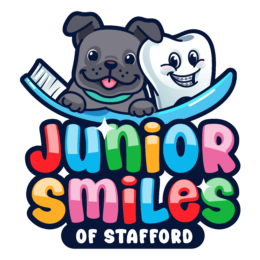How Much Does a Pediatric Dentist Visit Cost? Breaking Down the Fees

Ensuring your child has a healthy smile is a top priority—but one of the biggest questions that often arises is: “How much does a pediatric dentist visit cost?”
Whether it’s your child’s first dental appointment or a routine cleaning, understanding the breakdown of costs can help you plan ahead, avoid surprise expenses, and make informed decisions about their oral health.
In this article, we’ll cover:
- The average cost of pediatric dental visits in the U.S.
- What specific services cost (with and without insurance)
- Factors that affect pricing
- Insurance coverage and how to save on dental care
Why Pediatric Dental Visits Matter
Before we dive into the costs, let’s talk about why pediatric dental visits are so important. According to the American Academy of Pediatric Dentistry (AAPD), children should see a dentist by their first birthday or within six months of their first tooth erupting.
These early visits can:
- Catch dental issues before they become serious
- Teach children proper oral hygiene habits
- Monitor jaw and tooth development
- Help prevent dental anxiety with positive experiences
Neglecting dental care can lead to cavities, gum disease, difficulty eating or speaking, and expensive emergency treatments later on. That’s why early and regular visits are essential.
Average Cost of a Pediatric Dentist Visit
The cost of a pediatric dental visit varies depending on where you live, the services performed, and whether you have insurance.
Here’s a general breakdown of what you can expect:
| Service | With Insurance | Without Insurance |
| Routine exam & cleaning | $0–$50 (often covered at 100%) | $80–$150 |
| X-rays | $0–$25 (partially or fully covered) | $30–$100 |
| Fluoride treatment | $0–$20 | $20–$50 |
| Sealants (per tooth) | $20–$40 | $30–$60 |
| Cavity filling | $30–$150 | $100–$300 |
| Tooth extraction | $50–$200 | $100–$400 |
| Dental emergency visit | $50–$200 | $100–$500+ |
| Sedation or anesthesia | $100–$400+ | $200–$1,000+ |
Note: Prices vary based on your location, the complexity of the procedure, and the dentist’s fees. For example, practices in metropolitan areas like Northern Virginia or Washington, D.C. may charge more than those in rural communities.
Breaking Down the Most Common Pediatric Dental Fees
🪥 1. Initial Dental Exam and Cleaning
This includes:
- Visual exam
- Cleaning and polishing of teeth
- Oral hygiene education for parents and child
Without insurance: $80–$150
With insurance: Often fully covered (twice per year)
📷 2. X-rays
Dental X-rays help detect issues that aren’t visible during a standard exam, like cavities between teeth or bone abnormalities.
Bitewing X-rays (standard for kids): $30–$60
Panoramic X-rays (shows entire mouth): $60–$120
Insurance coverage: Typically covered once a year
🦷 3. Fluoride Treatment
A protective gel or varnish applied to teeth to prevent cavities. Recommended every 6 months for most kids.
Cost: $20–$50
Insurance: Usually covered for children under 14
🛡️ 4. Dental Sealants
Sealants are thin coatings applied to molars to prevent decay. Best for children between ages 6 and 14.
Cost per tooth: $30–$60
Insurance: Often covered fully or partially
🪛 5. Cavity Fillings
If a child develops a cavity, the dentist may need to remove the decay and fill the tooth.
- Tooth-colored (composite) fillings: $100–$250
- Silver (amalgam) fillings: $75–$150
Insurance: Covers 50–80% depending on the plan
🧼 6. Extractions
Tooth extractions may be needed for baby teeth that don’t fall out on their own, for orthodontic reasons, or due to decay or infection.
Simple extraction: $100–$250
Surgical extraction: $200–$400+
With insurance: Typically 50% coverage
🧸 7. Behavior Management or Sedation
Pediatric dentists are trained to handle fearful or anxious kids, and sometimes sedation is used for procedures.
- Nitrous oxide (laughing gas): $50–$100
- Oral sedation: $150–$300
- IV sedation: $300–$1,000+
Insurance: May be covered if medically necessary
Factors That Affect Pediatric Dental Costs
📍 1. Geographic Location
Dental fees are typically higher in urban areas or states with higher living costs. For instance, a cleaning in Stafford, VA might cost less than in New York City.
🏥 2. Type of Dental Practice
- Specialized pediatric dental offices may charge more due to their training and child-focused amenities.
- General dentists who treat children may charge slightly less but may not offer the same child-friendly environment.
👩⚕️ 3. Dentist’s Experience
Pediatric dentists undergo extra training and often work with kids with special healthcare needs. Their expertise may reflect in slightly higher fees.
📋 4. Complexity of the Treatment
The more complicated the procedure (e.g., sedation, multiple fillings, emergency care), the higher the cost.
💳 5. Insurance Status
Whether or not you have dental insurance plays a huge role in what you pay out of pocket.
Does Dental Insurance Cover Pediatric Dentistry?
Yes—most insurance plans offer partial or full coverage for pediatric dental care, especially preventive services.
What’s Usually Covered:
✅ Exams
✅ Cleanings (2 per year)
✅ X-rays
✅ Fluoride treatments
✅ Sealants (usually under age 14)
✅ Fillings and extractions (partial)
What May Not Be Covered:
❌ Cosmetic treatments
❌ Orthodontics (unless medically necessary)
❌ Sedation unless deemed necessary
Be sure to check your policy details or speak with your provider to understand your child’s coverage.
What If You Don’t Have Dental Insurance?
Here are some ways to manage pediatric dental care without insurance:
1. Dental Discount Plans
These are membership-based programs that offer reduced rates on services at participating dentists. Not insurance, but often helpful.
2. Payment Plans
Many pediatric dental offices offer payment plans that allow you to split the cost into monthly installments.
3. Medicaid or CHIP
If you qualify based on income, Medicaid or the Children’s Health Insurance Program (CHIP) may cover all or most pediatric dental costs.
In Virginia, the Smiles For Children program provides dental benefits for kids under Medicaid/FAMIS.
4. Community Dental Clinics
Some nonprofit or government-supported clinics offer low-cost or free dental services based on income.
Tips to Save on Pediatric Dental Visits
💡 Schedule Regular Visits – Preventive care is cheaper than restorative procedures.
💡 Use Your Benefits – Most plans cover 2 exams and cleanings yearly—don’t skip them!
💡 Stay In-Network – Choosing a dentist in your insurance network saves money.
💡 Ask for Treatment Estimates – Get a cost breakdown before approving any procedures.
💡 Look into FSAs or HSAs – If your employer offers these, you can use them for dental expenses tax-free.
Sample Cost Breakdown: A Realistic Visit
Let’s say your 6-year-old has their first routine check-up without insurance:
| Service | Cost |
| Exam & cleaning | $100 |
| X-rays | $40 |
| Fluoride treatment | $30 |
| Total | $170 |
Now, imagine they need a small filling on a molar:
| Service | Cost |
| Composite filling | $150 |
| Total cost (new total) | $320 |
With insurance covering preventive care and 80% of the filling, your out-of-pocket might only be $30–$50.
Final Thoughts: Plan Ahead and Prioritize Prevention
The cost of pediatric dental visits can vary, but understanding the breakdown of fees helps you plan ahead and avoid financial stress. Preventive care is typically the most affordable—and often fully covered by insurance—so be proactive about routine visits.
Whether you have dental insurance or not, there are always options to make quality pediatric dental care more affordable. Early oral care sets the foundation for a lifetime of healthy smiles, and that’s a priceless investment in your child’s future.
Looking for a Pediatric Dentist in Stafford, VA?
At Junior Smiles of Stafford, we believe in transparent pricing, compassionate care, and helping families understand their dental costs. We accept most major insurance plans and offer flexible payment options to make visits stress-free.
📍 Schedule your child’s appointment today and let us guide you through every step of their dental journey—with no financial surprises.

